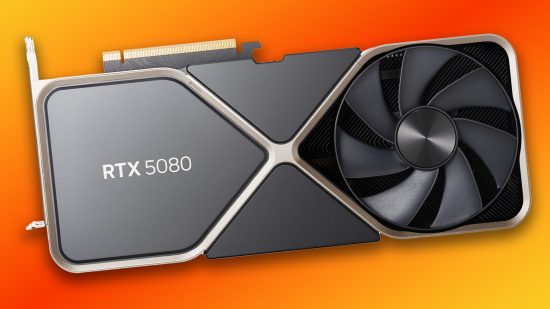Soon you’ll be able to buy a GPU that’s faster than the mighty RTX 4090 at ray tracing, but for a much lower price, if the latest rumors about the Nvidia GeForce RTX 5080 are to be believed. Maybe Nvidia will have learned its lesson from the original RTX 4080 launch and not give it a ridiculous price too. We can all but hope.
The Nvidia GeForce RTX 4090 is undoubtedly the best graphics card you can buy right now, but it’s also extremely expensive, with prices for this 4K gaming GPU starting from $1,799 on Newegg right now. However, if these rumors are to be believed, the RTX 5080 will offer more performance for less money.
According to X (formerly known as Twitter) tech leaker AGF (@XpeaGPU), “GB203 is close to AD102 in raster and faster in RT,” with GB203 being the rumored codename for the GPU on which the RTX 5080 is expected to be based. Basically, if this leak is true, the RTX 5080 will be even faster at processing realistic ray traced lighting in games than the current RTX 4090, though it’s going be about the same speed when it comes to standard rasterization.
The post was in response to a question about whether the RTX 5080 is getting a good boost in performance compared to the RTX 4080, to which AGF replied that it “will depend on AMD competitiveness,” adding that it’s “too early to say.”

The same leaker has also stated that the top three Nvidia Blackwell gaming GPUs will all feature GDDR7 memory, and if Blackwell follows the Ada naming release lineup, that means we can expect the RTX 5090, RTX 5080, and RTX 5070 Ti to all feature this new high-speed memory standard. GDDR7 memory has already been demonstrated running at 32Gbps by Samsung, although we don’t expect it to run beyond 24Gbps on the first supporting graphics cards.
The GB203 GPU has previously been rumored to feature the same 256-bit memory bus width as the current RTX 4080, with tech leaker kopite7kimi claiming that “GB203 is 256-bit and GB205 is 192-bit.” This leaker has also claimed that GB203 is likely to have just six Blackwell graphics processing clusters (GPCs), although another leaker, RedGamingTech, has claimed it has seven of them.
If the latter is true, that would make the difference between the RTX 5080 and 5090 very similar to the current difference between the RTX 4080 and 4090. Of course, Nvidia hasn’t confirmed any specs about its forthcoming Blackwell gaming GPUs yet, so all of this needs to be taken with a pinch of salt.
In the meantime, if you’re looking to build a gaming PC with one of the latest graphics cards, check out our RTX 4070 Super review, where we benchmark Nvidia’s new mid-range GPU.
